Manta Social Network
Scuba Diver
|Issue 03 - 2019(116)
In the last issue of Asian Diver magazine, we learned that Manta Rays in Bali were using different dive sites for different purposes, depending on their life stages. Now, the Marine Megafauna Foundation has uncovered the details of their social lives, like never before
-

Sharks and rays are generally solitary creatures, but reef manta rays form social relationships and interact with each other like few could’ve imagined. In a first-of-its-kind study, marine biologists used photography to study a population of mantas in Indonesia’s pristine Raja Ampat Marine Park. The results show that rays form social bonds in multiple relationships and actively choose their social partners.
Research by scientists from the Marine Megafauna Foundation, Macquarie University, the University of Papua, and the University of York is the first to describe the structure of social relationships in manta rays. The study by Rob Perryman et al, titled “Social preferences and network structure in a population of reef manta rays” is published in the journal Behavioral Ecology and Sociobiology. The researchers studied the structure of more than 500 of these groups over five years, in Indonesia’s Raja Ampat Marine Park, one of the most biodiverse marine habitats on earth. They found two distinct but connected communities of rays living together. These social communities were quite differently structured, one being made up of mostly mature female rays, and the other a mix of males, females, and juveniles.
“We still understand very little of how mantas live their lives, but we know they are socially interactive, and these interactions seem important to the structure of their populations. Understanding social relationships can help predict manta ray movements, mating patterns and responses to human impacts. That’s essential for conservation and ecotourism efforts,” said lead author Perryman, who is a researcher for Marine Megafauna Foundation and Ph.D. student at Macquarie University.
Denne historien er fra Issue 03 - 2019(116)-utgaven av Scuba Diver.
Abonner på Magzter GOLD for å få tilgang til tusenvis av kuraterte premiumhistorier og over 9000 magasiner og aviser.
Allerede abonnent? Logg på
FLERE HISTORIER FRA Scuba Diver
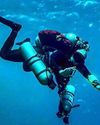
Scuba Diver
The Making Of A World Record-Breaking Diver
Descending more than 300 metres into the depths of the ocean may sound like a daunting prospect to even the most seasoned diver. But to one man, it was just another a challenge that he set for himself to see how far he was able to push the envelope.
6 mins
Issue 05 - 2020(119)

Scuba Diver
Risk Mitigation: Hose Failure
An unexpected outcome
3 mins
Issue 05 - 2020(119)
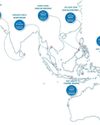
Scuba Diver
Top 10 Wrecks Of Asia-Pacific
We present a curated list of the top 10 most famous wrecks found in the Asia-Pacific region, listed in no particular order
3 mins
Issue 05 - 2020(119)
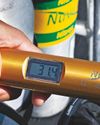
Scuba Diver
From The Medical Line: Diving After DCS
DAN medical information specaialists and researchers answer your dive medicine questions
4 mins
Issue 05 - 2020(119)

Scuba Diver
Cave Exploration: Beginning With The End In Mind
Building complex adventures on simple skills
9 mins
Issue 05 - 2020(119)
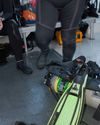
Scuba Diver
Dive Slate: Stay Safe On Board
When preparing for a dive, safety is at the top of the list – checking gear, learning potential site hazards and discussing procedures with your divemaster or buddy.
1 mins
Issue 05 - 2020(119)

Scuba Diver
101 Tips On Becoming A Better Tek Diver
Technical diving takes divers beyond the typical recreational scuba diving limits, opening up many new and exciting possibilities.
28 mins
Issue 05 - 2020(119)
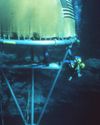
Scuba Diver
TECHNICAL DIVING TIMELINE (1660–1999)
It’s fair to say that the emergence of “technical diving” in the late 1980s, that is, the introduction of mixed gas technology, and later mixed gas rebreathers to the sport diving community, represented the culmination of hundreds of years of scientific discovery and technological development.
20 mins
Issue 05 - 2020(119)

Scuba Diver
FLYING AFTER DIVING
From the Safety Stop
2 mins
Issue 05 - 2020(119)

Scuba Diver
DIAGNOSING DECOMPRESSION ILLNESS
Incident Insight
3 mins
Issue 05 - 2020(119)
Translate
Change font size

